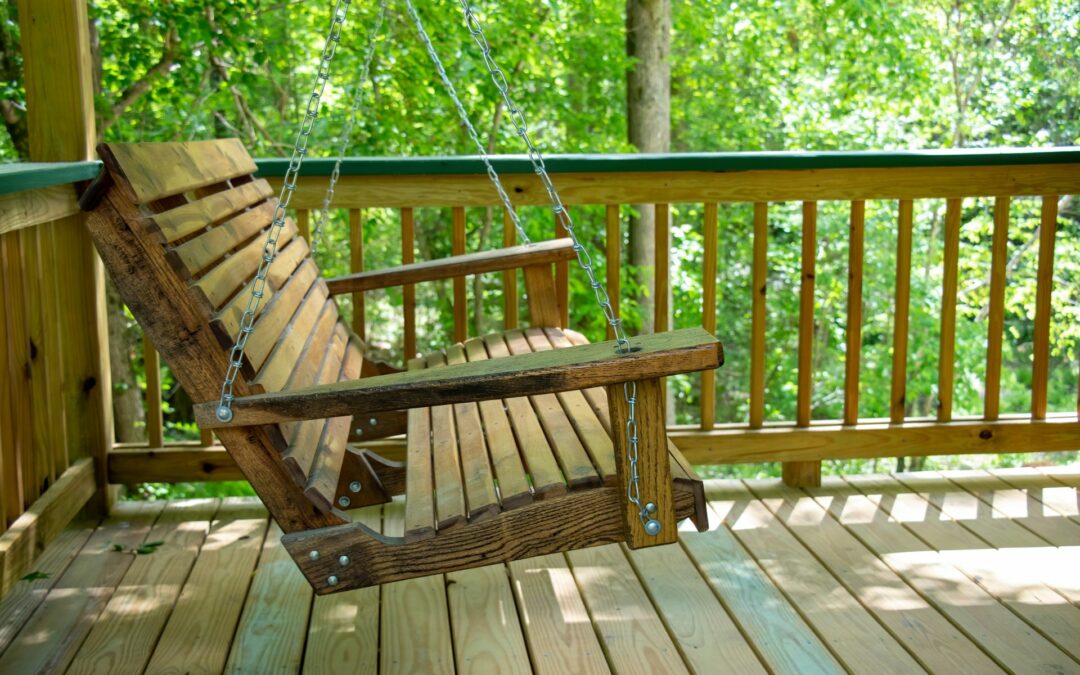Porch swings have been a backyard staple for many years. They have become a symbol of relaxation, comfort, and peace. The gentle swaying motion of a porch swing can be incredibly soothing and therapeutic, making it the perfect spot for reading, napping, or spending time with loved ones. But where did porch swings come from, and how did they become such an integral part of American outdoor living?
The history of porch swings can be traced back to the early 18th century when they were used as a bed for sleeping on hot summer nights. The earliest porch swings were made from simple wooden planks or rope hung from a tree or porch. They were often used as a place to rest during the day or to sleep at night when the temperatures outside were too hot to bear.
As time passed, porch swings became more elaborate and were designed to be used specifically for relaxation and enjoyment. In the 19th century, porch swings became popular in the United States, and manufacturers began to produce them in large numbers. The popularity of the porch swing can be attributed to the Victorian era’s influence on outdoor living, which encouraged people to spend more time outside in their gardens and on their porches. Porch swings quickly became a symbol of leisure and relaxation, and many people began to incorporate them into their outdoor spaces. They were made in a wide range of styles, from simple wooden designs to elaborate wrought-iron models with intricate patterns and details. They were often accompanied by comfortable cushions and pillows to enhance the seating experience.
In the early 20th century, porch swings underwent another transformation as they became a popular feature of the American Arts and Crafts movement. The Arts and Crafts movement emphasized simple, handcrafted designs and natural materials, and porch swings made during this time often featured beautiful wooden craftsmanship and hand-carved details.
Today, porch swings remain a beloved feature of American outdoor living. They have evolved to incorporate modern materials and designs, but they still offer the same sense of relaxation and comfort that they have for hundreds of years. They are available in a wide range of styles and materials, from classic wooden designs to modern metal and plastic models.
When choosing a porch swing for your outdoor space, there are several things to consider. First, think about the size of your porch or patio and the amount of space you have available. Porch swings come in a variety of sizes, from small single-seaters to large models that can accommodate several people at once.
Next, consider the material of the porch swing. Wooden swings are classic and timeless, but they require regular maintenance to keep them looking their best. Metal and plastic swings are durable and require less maintenance, but they may not have the same warmth and character as wooden models.
Finally, think about the style of your porch swing. Do you prefer a classic wooden design, or are you drawn to a more modern, sleek look? Consider the style of your home and outdoor space when choosing a porch swing to ensure that it complements your overall design aesthetic.
In conclusion, porch swings have a rich history that spans hundreds of years. They have evolved from simple wooden planks to beautifully crafted designs made from a variety of materials. Whether you prefer a classic wooden swing or a modern metal or plastic model, a porch swing is the perfect addition to any outdoor space. So sit back, relax, and enjoy the gentle swaying motion of a porch swing as you soak up the beauty of your backyard.

